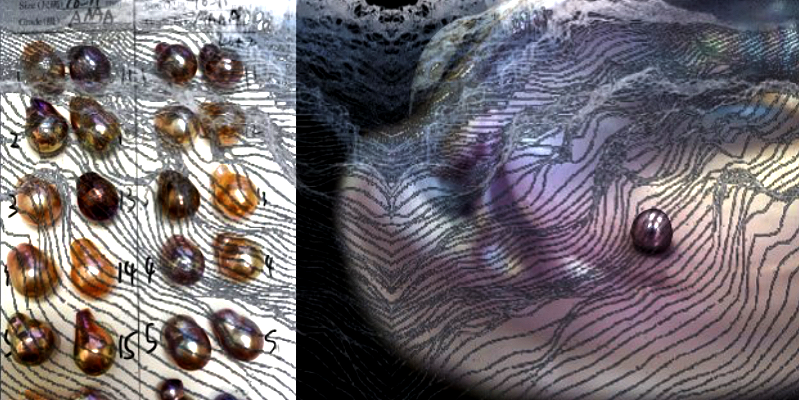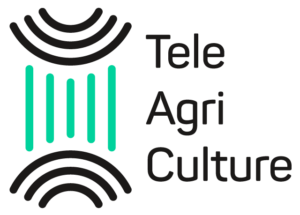Forced Culturing: An Anthropocentric Narratology of Time-Based, Subjective Value Perception

Can one force an increased perception of value in another through the act of culturing? What are the ethical dimensions of cultural assimilation through force in regards to Bio/Identity Politics and how does this fit into an existing Transatlantic history of colonial migration, cultural assimilation and invasive ecologies?
This project explores the cultural, ecological and economic histories between the endangered pearl river mussels (Flussperlmuschel) and the migratory, often defined as invasive, zebra mussels (Wandermuschel), focussing mainly on the sites of in Upper Austria the Great Lakes in U.S, using the metaphor of the pearl as a foundation for its discourse.
Inspired originally by the 2021 OÖE Heimische Perlengeheimnisse exhibition, this project will develop a cultured pearl from the Upper Austrian freshwater Pearl Mussel onto an invasive triangle mussel, along with developing a multimedia narratology that examines how subjective, cultural value creation can be colonised from human perceptions of migrations and otherness onto non-human actors .
The project includes research and development residencies at Coalesce Center for BioArt, Buffalo and Cultivamos Cultura (Portugal), along with further project development in collaboration with the Biologiezentrum, Blattfisch and Donautics in Linz.
The project addresses how the conservational privilege of certain species over others leads to negative impacts on ecologies through the act of forced culturing of a pearl from the Margaritifera margaritifera (freshwater pearl mussel) onto the invasive Dreissena polymorpha (zebra mussel) to be realized as a data driven transmedia installation centered around the fetishized artifact of the cultured pearl on a non-pearl producing species, along with a peripheral narratology using post natural and digital fabrication methods to be presented as a in order to underscore the themes being addressed and comprising of several outputs produced within the framework of the project .
Conceptual Background
Similar to the way oysters shifted historically, from a key food staple of the working classes, to a fetishised, luxury food item (due to its connections to pearls, its perceived aphrodisiacal qualities and its increasing scarcity due to overfishing) freshwater pearl mussels, or Margaritifera margaritifera are particularly recognized in Austria as very special animals, as wonderfully shown in 2021 at the Heimische Perlengeheimnisse exhibition, organised by the OÖ. Landes-Kultur GmbH. As with most natural species that become fetishised as luxury goods, and also due to the impacts of agriculture, industrialisation, urbanisation and habitat destruction in general, these pearl mussels are now critically endangered. In contrast, the zebra mussel (Dreissena polymorpha) , while controlled through their long history of existence in the waters of Upper Austria, have become a prolific coloniser in the water systems of the Great Lakes region, with seemingly uncontrollable consequences. So how does this occur that a seemingly more valuable species of mussel can become even more valuable through its increasing scarcity, while another species becomes exponentially less valuable, to the point of being labelled aggressively invasive and a pest? Particularly when both species co-exist in both habitats?
This project addresses how the conservational privilege of certain species over others leads to negative impacts on ecologies through the act of forced culturing of a pearl from the Margaritifera margaritifera (freshwater pearl mussel) onto the invasive Dreissena polymorpha (zebra mussel). This will be realised as a data driven transmedia installation centred around the fetishized artefact of the cultured pearl on a non-pearl producing species, along with a peripheral narratology using postnatural and digital fabrication methods to be presented as a in order to underscore the themes being addressed and comprising of several outputs produced within the framework of dataism. This artistic approach was also developed in order to address and shift our historically anthropocentric views of migration, immigration, displacement of native populations through foreign colonisation. The introduction of new species into native ecosystems is generally perceived as an invasion whereas it is more of a case of colonisation. This project will examine these parallels, through the act of directly invading the body of one species with fragments from another, in order to assimilate its ‘valuable’ qualities, in this case producing a beautiful pearl. This very process questions a plethora of cultural paradigms that expand well beyond how we perceive the ecologies of invasive species, to include notions of time, space, gender, race, culture, scarcity, conservation privileging of beautiful organisms, transatlantic paradigms of migration, colonisation and invasion, the role of mothering (the ‘mothering of pearl for example) and more.
Culturing Value and Violence
The act of culturing somewhat challenges traditional didactic gender associations with mothering and the role of gender in the act of creation, creating a kind of othering of mothering. This action also builds a post-natural ontology on geological & deep time in regards to Post-Anthropocenic design, accelerating a 90 year old culturing process in nature, to an accelerated human facilitated 6-12 month process on another species, paradoxically invading the invasive species with a cultivation methods that makes them more valuable. Interestingly however, the Margaritifera margaritifera can live up to 250 years of age, whereas the Dreissena polymorpha lives for a much shorter period of around 5 years. This layering creates a further metaphorical context to the project in relation to the working class, labour, migrant exploitation and lifespans, again playing with traditional anthropocentric associations with the two species.
This Post-Natural act of accelerating natural processes through artificial crafting makes reference to the digital turn in art and archiving in regards to value associations with post-digital fabrication and replication. But also does so in a very natural and real sense, through the act of physically invading an organism that is approximately 400 million years old and making it valuable through the creation of a pearl builds on a discourse in regards to scarcity in nature, versus artificial scarcity, a post-industrial term that refers to incorrectly
deeming something as rare, items despite having the technology available for production or the sufficient capacity for sharing it. The most common causes are monopoly pricing structures, particular in digital technology such as those enabled by laws that restrict competition or by high fixed costs in a particular marketplace. Such value protocols create the notion of false wealth or rather a form of fetishised wealth that is created through the accruement of resources, is a direct result of neoliberalism and is in most cases of huge detriment to the environment.

